|
|
Post by ifurita on Jan 20, 2008 10:47:55 GMT 8
Just noticed that Utrics don't have their own section, so for all the fans of 'pond scum', here's a bunch of pics I've taken over the past year... U. resupinata 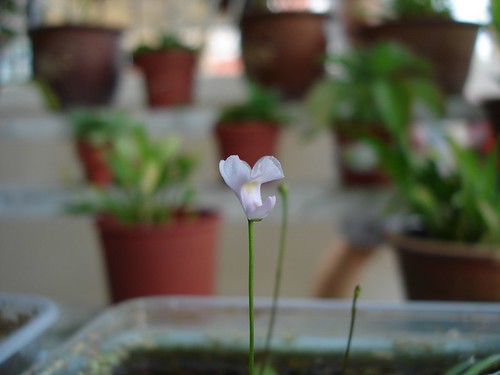 U. sandersonii  U. minutissima 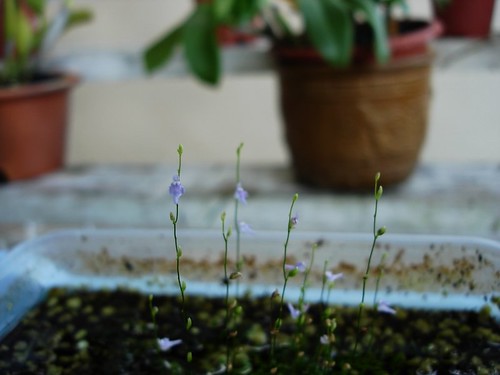 U. livida  U. bisquimata 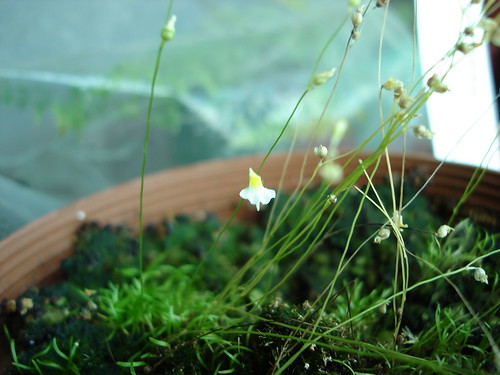 U. aurea -dropped off before I got home 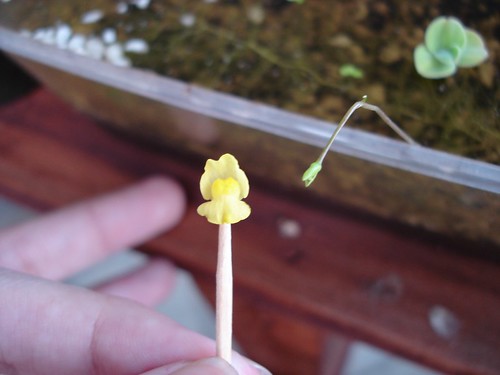 U. reniformis 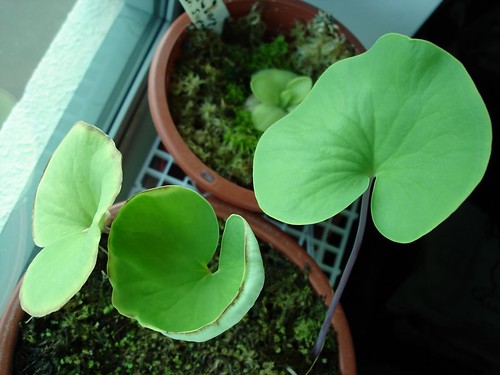 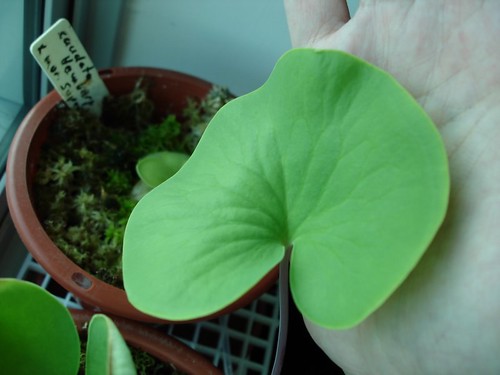 |
|
|
|
Post by strath76 on Jan 26, 2008 8:39:01 GMT 8
Nice pics. What conditions do you grow your reniformis in? I have struggled with this variety. Mine tend at this stage to produce only small leaves. I have them in a sphagnum/orchid bark mix at the moment.
|
|
|
|
Post by ifurita on Jan 27, 2008 21:25:33 GMT 8
Hi strath,
My U. reniformis is grown as a windowsil plant. Its gets air-con at night while I'm sleeping, but otherwise isn't cooled. Top watered, but stands in a tray of water. Some morning sun, the humidity can vary quite wildly, since air-con humidity is ~30%.
|
|
|
|
Post by strath76 on Jan 28, 2008 9:28:36 GMT 8
Thanks Ifurita, your conditions sound similar to mine although mine recieves no cooling. I think maybe the roots are a bit warm. I think I'll try a terracotta pot to see if that helps. Thanks.
|
|
|
|
Post by cosmoking on Feb 5, 2008 4:29:23 GMT 8
Hi strath76,
First of all are you sure that your plant is a genuine reniformis and not nelumbifolia? The 2 species are very similar both in terms of flowers and foliage but have different cultural requirements.
If it is a reniformis, your mix sounds too light for it. People dont seem to aknowledge the fact that U. reniformis is a large terrestrial; it appreciates heavy mixes with a large amount of peat. It also loves having room to spread and opportunities to make many, fat tubers; a very large pot or container is thus a good idea. I grow mine in a very large pot in almost pure peat; it has produced many tubers and in the height of the growing season it often has over 30 leaves, a few of them as big as my palm.
My plant is currently in dormancy, but you can clearly see the tips of some tubers that are clinging to the surface. I will take a picture to show you if you like.
|
|
|
|
Post by strath76 on Feb 5, 2008 8:40:39 GMT 8
Thanks Cosmoking, I am confident that it is reniformis as it was purchased from a reputable CP nursery at a CP Society show. I have it in a large pot but will try changing the mix. When I bought it it was in a small 4 inch pot and is now in a pot at least double that size. It currently is just surviving.
|
|
|
|
Post by ifurita on Feb 5, 2008 19:03:55 GMT 8
Woah, thanks for the input Cosmoking! I guess I'm growing my reniformis wrongly, because my mix is lighter than strath76's and there's totally no peat in it at all. I'm sure mine is a reniformis though, because I have a U. nelumbifolia growing beside it, so I'm quite sure I can tell the difference, haha...but anyway, what are U. nelumbifolia's cultural requirements?
|
|
|
|
Post by cosmoking on Feb 6, 2008 4:02:34 GMT 8
strath76,
It is probably a healthy little plant; when mine was in a small pot like yours was it only ever had 1 leaf at a time, but if you gently tip it out of the pot I am sure that you will see that it has plenty of underground stems.
infurita,
I wouldn't say you're growing it "wrongly"- there isnt much there for your plant but from the leaves that are there I can see that they are very healthy and green. I suspect if you enlarged the pot significantly you would get a lot more leaves, and maybe flowers next year.
To be honest I discovered that the species loves peat by accident; when I reppoted it into its huge pot 2 years ago, I didnt have very much sand(in fact, barely any) and I had no perlite at all, so I poured in the little sand I did have and the rest of the mix was just pure peat. However, I noticed that the plant was doing a hell of a lot better and above and beyond from what it had ever done for me before; it was only months later that I read that the species enjoys a high peat content in the medium, and quite often does not need anything else apart from it.
The reason for this seems to be the habitat; U. reniformis is an inhibitor of swamps and marshes, where the soil tends to be very dense. Some people who know of this still choose to use lighter mixes; I cannot fault them for some of these plants look lovely and flower, but I do not believe that a plant in such a mix can do as well as one in a denser one, for example a plant in pure peat.
Remember also that this plant loves to spread and tends to sulk and only produce a few leaves if it does not have the adequate room; give it as large a pot as possible.
U. nelumbifolia differs in the fact that its habitat is completely different; it is often found inside water-filled bromeliads that grow epythitically on trees. In cultivation, however, it likes to grow in spaghnum moss(dead is better, as live tends to rot if buried and exposed to a high water table) and the water level should be very high at all times; at or just below the pot level.
|
|
|
|
Post by strath76 on Mar 29, 2008 7:23:42 GMT 8
Just an update on my reniformis. Since I have changed the mix to predominantly peat bassed my plant has sent up two new leaves and is looking a lot healthier. Hopefully I will get a flower from it later this year. Thanks again for the advice Cosmoking.
|
|
|
|
Post by kianliang87 on Mar 30, 2008 0:50:01 GMT 8
Looks very nice. Nice pictures.
|
|